mobile Ansicht, to the English Version tap the flag
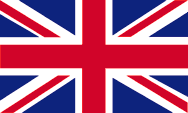

- auch: Singkiang
- separatistische Region in Westchina
- 1949 von China besetzt
- Eigenbezeichnungen:
– Uigurisch: Uigurstan oder Dsungarai
– Chinesisch: Xinjiang Uygur Zizhiqu
• Flagge
• historische Flaggen
• Bedeutung/Ursprung der Flagge
• Landkarte
• Zahlen und Fakten
• Geschichte
• Ursprung des Landesnamens
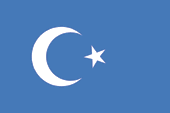
seit 1949,
Flagge der uigurischen Unabhängigkeitsbewegung,
Seitenverhältnis = 2:3,
Quelle, nach: UNPO






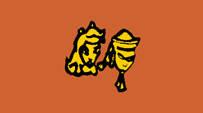
8./9 Jahrhundert,
angebliche Flagge des Uiguren-Reichs,
Dank an: Faruk Tezer,
Quelle/Source nach/by: anamurunsesi.com



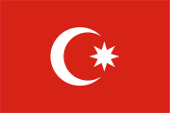
1864–1877,
Flagge von Kaschgarien
Quelle, nach: World Statesmen



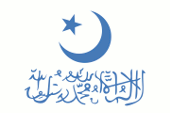
1933–1934,
Flagge der Islamischen Republik Ostturkestan,
Quelle, nach:
Flags of the World,
World Statesmen



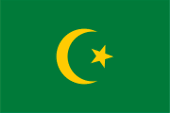
1944–1946,
Flagge der Republik Ostturkestan,
Quelle, nach:
Flags of the World,
World Statesmen



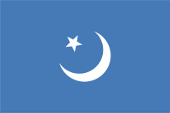
1944–1949,
Nationalflagge der Republik Ostturkestan,
Quelle, nach:
Wikipedia (DE),
World Statesmen



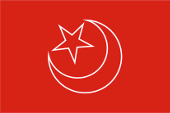
1943–1949,
Nationalflagge der Volksrepublik (?),
Quelle, nach:
Flags of the World,
Flaggen Enzyklopädie




Im Jahre 1640 entstand das Dsungarische Khanat der westmongolischen Oiraten unter Khungtaidschi Batur, dessen Bewohner den Namen Dsungaren bekamen. Im Jahre 1758 wurde das Land von China erobert. Immer wieder gab es Aufstande der Dsungaren gegen die chinesische Herrschaft, der längste uns bekannteste war die Revolte des Jakub Bek, der von 1865 bis 1877 einen unabhängigen Staat Kaschgarien im Westen Ostturkestans regierte. Ethnologisch waren im 20. Jahrhundert aus den Dsungaren wieder die Uiguren geworden, eine Rückbesinnung auf eine alte turkestanische Ethnie, die vom 8. bis zum 14. Jahrhundert existierte. Mit der chinesischen Revolution von 1911 endete nicht nur die Monarchie, sondern der ganze chinesische Staat verfiel in einem Auflösungsprozess. Politische Armeen (Guomindang, Kommunisten, Monarchisten), nationale Truppen (Mandschu, Mongolen, Uiguren ...) und lokale Kriegsherren teilten das Land unter sich auf und führten einen permanenten Bürgerkrieg, zeitweise unterbrochen durch die Japanische Intervention (1937–1945). Die Uiguren, ein Turkvolk zwischen Tibet, Mongolei, Kasachstan und Kirgisien wurden durch den Zusammenbruch Chinas quasi unabhängig. Sie gründeten zwei mal einen eigenen Staat, und zwar 1933 bis 1934 die Islamischen Republik Ostturkestan und 1943 bis 1949 die Republik Ostturkestan. Dabei wurde jeweils eine blaue (hellblaue) Flagge mit Halbmond und Stern in Weiß gehisst. Blau ist die Farbe der tatarischen Völker (Turkvölker und Mongolen) und Halbmond und Stern stehen für den Islam, die vorherrschende Religion. Es wird zwischen 1943 und 1949 auch über eine grüne Flagge mit Halbmond und Stern in Gold berichtet, vielleicht repräsentierte sie eine andere politische Richtung oder Gegenregierung. Fakt ist, dass die Sowjetunion in dieser Zeit in das Geschehen eingriff und durch die Unterstützung Ostturkestans dessen Eingliederung in ihr Staatsgebiet anstrebte, ein Schicksal, das bereits alle Turkvölker Mittelasiens teilten. Möglicherweise stammt aus dieser Zeit das Projekt der sowjet-loyalen Volksrepublik Ostturkestan über dessen rote Flagge einige wenige Quellen berichten, ein Fakt der nicht untypisch für das Vorgehen der Sowjetunion in solchen Fällen gewesen wäre. Der uigurische Staat endete im Jahr 1949 unter den Schlägen der Chinesischen Volksbefreiungsarmee. Seither gilt die blaue Flagge als Flagge der uigurischen Nationalisten, die Ostturkistan in einem bis heute andauernden bewaffneten Untergrundkampf aus China herauslösen wollen. So brachen allein im Jahre 1996 45 bewaffnete Aufstände in 15 verschiedenen Teilen Ossturkestans aus. Über die historische Flagge des Reiches der Uiguren ist nichts bekannt. Das safrangelbe Tuch könnte ein Hinweis auf den Buddhismus sein, die ursprüngliche Religion der Uiguren, dem die Juguren in Zentralchina noch immer anghängen.
Quelle:
Flags of the World,
1) Wikipedia (DE),
2) Wikipedia (DE),
Volker Preuß

Lage:
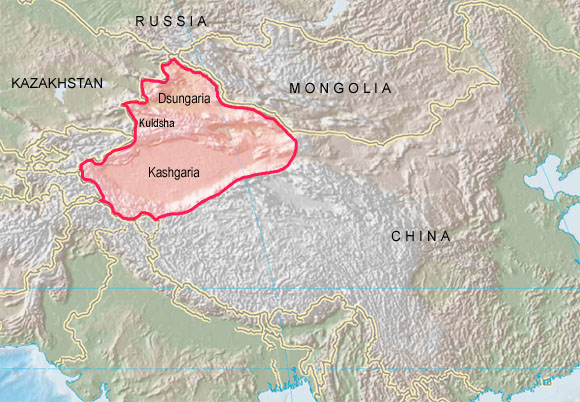
Quelle/Source: Freeware, University of Texas Libraries, modyfied by: Volker Preuß

Fläche: 1.640.320 km²
Einwohner: 25.852.345 (2020), davon 45% Uiguren, 41% Chinesen (Han), 12% andere Turkvölker und Mongolen
Religionen: 58% Moslems, 30% Daoisten, Konfuzianisten, Buddhisten, 1% Christen
Bevölkerungsdichte: 16 Ew./km²
Hauptstadt: Ürümqi, 4.054.369 Ew. (2020)
Amtssprache: Chinesisch
sonstige Sprachen: Uigurisch, Kasachisch, Kirgisisch
Währung: chinesische Währung
Zeitzone: MEZ + 7 h (Chinesische Zentralzeit)
Quelle: Wikipedia (DE)

3. Jhd. v.Chr. · das heutige Ostturkestan ist Herrschaftsgebiet der "Xiongnu" (ethnisch ungeklärt)
5. Jhd. n.Chr. · Eroberung des heutigen Ostturkestans durch die Weißhunnen (Hephthaliten)
6.–8. Jhd. · die Osttürken (Alt-Uiguren) siedeln in der heutigen Mongolei, teilweise Abwanderung in das heutige Ostturkestan, dort Herrschaft regionaler Dynastien aus den Völkerschaften der Tibeter, Uiguren, Kirgisen, Mongolen und Dsungaren
745–840 · Osttürkisches Reich in der heutigen Mongolei
840 · das Osttürkische Reich der Uiguren wird von den Kirgisen zerstört, Abwanderung der Uiguren nach Ostturkestan (Xinjiang), Vermischung mit der dort ansässigen tocharischen und iranischen Bevölkerung, Herausbildung des heutigen Turkvolkes der Uiguren
9.–13. Jhd. · islamisches Karachaniden-Reich im Westen Ostturkestans, Reich der Uiguren im Osten Ostturkestans, allmähliche Ausbreitung des Islam über ganz Ostturkestan
1219 · Eroberung durch die Mongolen unter Dschingis Khan
1227 · Tod des Dschingis Khan, sein Reich wurde unter die seinen vier Söhnen aufgeteilt. Tschutschi erhielt Westsibirien; Ügedei erhielt das heutige China, Korea, die heutige Mongolei und Mandschurei und wurde zum Nachfolger und Großkhan ernannt; Tschagatai erhielt Ostturkestan, das heutige Tadschikistan, Kirgisien und Usbekistan; Sübedei erhielt das heutige Afghanistan und Turkmenistan.
15. Jhd. · Staat Mogolistan
17. Jhd. · Staaten Kaschgarien und Dschungarei
1758 · Eroberung der Dschungarei durch China (Nord-Ostturkestan)
1760 · Eroberung Kaschgariens durch China (Süd-Ostturkestan)
19. Jhd. · wachsender russischer Einfluss, islamische Aufstände
1871 · China tritt die Region Kuldscha (Yining) für 10 Jahre an Russland ab
10.10.1911 · Sturz der Monarchie in China, Bürgerkrieg und Unruhen, Ostturkestan (Uiguristan) wird de facto unabhängig
1916–1928 · Bürgerkrieg in China (Monarchisten gegen bürgerliche Guomindang und lokale Gruppen)
1928–1935 · Bürgerkrieg in China (Kommunisten gegen Guomindang und lokale Gruppen)
1933–1934 · Islamische Republik Ostturkestan
1937–1945 · Krieg in China (Kommunisten und Guomindang gegen Japan)
1944–1949 · Republik Ostturkestan
1945–1949 · Bürgerkrieg in China (Kommunisten gegen die Guomindang und lokale Gruppen)
01.10.1949 · Proklamation der Volksrepublik China
Oktober 1949 · Einmarsch der Chinesischen Volksbefreiungsarmee in Ostturkistan, Angliederung an China, in der Folgezeit starke chinesische Besiedlung
1955 · Ostturkestan wird "Uigurische Autonome Region"
1964 · erste Kernwaffentests der chinesischen Armee
Quelle:
Wikipedia (D),
Flags of the World,
World Statesmen

Turkestan (oder auch Turkistan) ist eine zentralasiatische Landschaft, die von zahlreichen Turkvölkern besiedelt ist. Turkestan ist durch die russisch-chinesischen Rivalitäten der vergangenen Jahrhunderte in Westturkestan (Kirgisien, Tadschikistan und Usbekistan) und Ostturkestan (Chinesisch-Turkestan) geteilt. Ostturkestan ist das Siedlungsgebiet der Uiguren, zwischen Tibet, Mongolei, Kasachstan und Kirgisien gelegen. Die Bezeichnung "Uiguren" ist zwar sehr alt und bezieht sich auf einen Turkstamm, wurde jedoch als gemeinsame Bezeichnung für alle Turkvölker Ostturkestans auf einem Turkvölkerkongress im Jahr 1921 in Taschkent beschlossen. Das Wort "Uigur" ist verwandt mit dem türkischen Wort "uygar" und heißt "zivilisiert".
Quelle:
Die Völker der Erde, Volker Preuß


![]()











